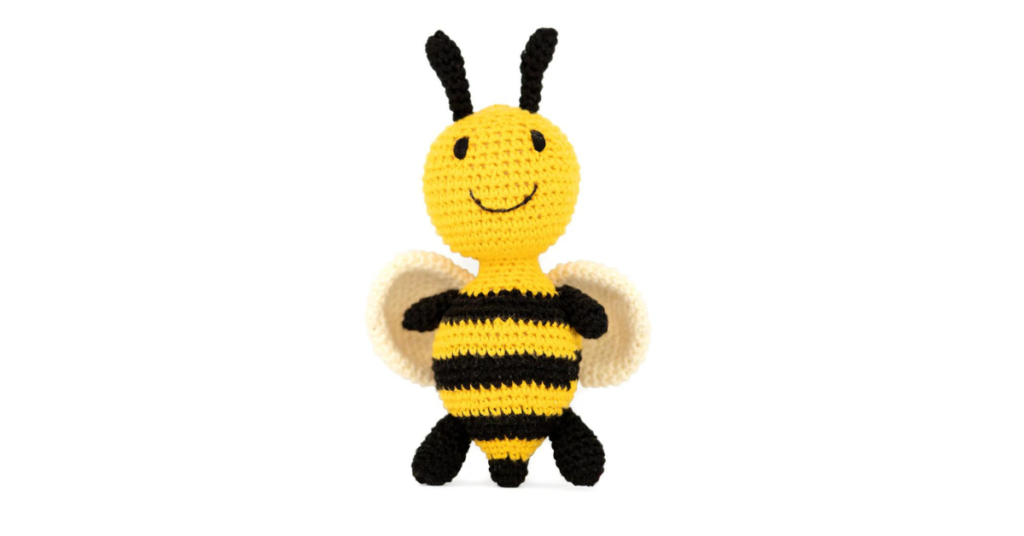Bees play an essential role in our ecosystem, primarily through their contributions to pollination. This process is crucial for the reproduction of many plants, including a significant portion of the crops that humans rely on for food. However, bee populations worldwide are in decline due to various factors such as habitat loss, pesticide use, disease, and climate change. “Bee Buddy” is a concept that encourages individuals, communities, and organizations to support and protect bee populations through various means. This guide delves into the importance of bees, the threats they face, and practical steps to become a Bee Buddy.
The Importance of Bees
Pollination and Biodiversity
Bees are vital pollinators, affecting approximately 75% of the world’s flowering plants and about 35% of global crop production. Their work helps produce fruits, vegetables, nuts, and seeds. This pollination process not only contributes to food security but also maintains biodiversity by supporting plant reproduction. Biodiversity is critical for ecosystem resilience, providing numerous ecological services such as soil formation, nutrient cycling, and climate regulation.
Economic Impact
The economic value of pollination services provided by bees is substantial. According to various studies, the global economic contribution of bees is estimated to be in the billions of dollars annually. This includes direct contributions to agricultural productivity and indirect benefits like improved crop quality and resilience against pests and diseases.
Ecosystem Health
Beyond their role in pollination, bees contribute to overall ecosystem health. Many plant species that rely on bee pollination are integral to the habitats of various wildlife. By supporting these plants, bees indirectly support a diverse array of organisms, contributing to rich and vibrant ecosystems.
Threats to Bee Populations
Habitat Loss and Fragmentation
Urbanization, agricultural expansion, and deforestation have led to significant habitat loss for bees. Natural habitats are being converted into land uses that are less conducive to bee survival, reducing the availability of food and nesting sites. Habitat fragmentation further exacerbates this issue by isolating bee populations and limiting their ability to forage and mate.
Pesticides and Chemicals
The widespread use of pesticides, particularly neonicotinoids, has been identified as a major threat to bee health. These chemicals can be toxic to bees, affecting their nervous systems and leading to disorientation, impaired foraging ability, and death. Additionally, pesticides can contaminate pollen and nectar, posing risks to bees and other pollinators.
Disease and Parasites
Bees are susceptible to various diseases and parasites, which can decimate colonies. The Varroa destructor mite, for instance, is a significant threat to honeybees, feeding on their blood and transmitting deadly viruses. Other pathogens, such as Nosema, a type of fungus, also pose severe risks to bee health.
Climate Change
Climate change impacts bees in several ways. Altered weather patterns can affect the availability of floral resources, disrupt the timing of flowering and bee activity, and shift the distribution of bee species. Extreme weather events, such as prolonged droughts and intense storms, can further stress bee populations and their habitats.
Becoming a Bee Buddy: Practical Steps
Creating Bee-Friendly Habitats
One of the most effective ways to support bees is by creating and maintaining bee-friendly habitats. This involves planting a variety of flowering plants that provide nectar and pollen throughout the growing season. Native plants are particularly beneficial as they are well-adapted to local conditions and are more likely to attract and support native bee species.
- Plant Diversity: Aim to include a range of plants that bloom at different times of the year to ensure a continuous food supply for bees. Examples include early-blooming crocuses, mid-season lavender, and late-season asters.
- Native Species: Prioritize native plants, which co-evolved with local bee populations and are better suited to their needs. For example, goldenrod and coneflowers are excellent choices in many regions of North America.
- Nesting Sites: Provide nesting habitats for bees by leaving bare patches of soil for ground-nesting species and installing bee hotels for cavity-nesting species. Avoid excessive mulching, which can obstruct ground-nesting bees.
Reducing Pesticide Use
Minimizing the use of pesticides in gardens and agricultural settings is crucial for protecting bees. When pest control is necessary, opt for bee-friendly alternatives and follow best practices to minimize harm.
- Integrated Pest Management (IPM): Employ IPM strategies, which focus on biological control, habitat manipulation, and the use of resistant plant varieties. Chemical controls should be a last resort.
- Selective Pesticides: If pesticide use is unavoidable, choose selective products that are less harmful to bees. Apply them during times when bees are not active, such as early morning or late evening, and avoid spraying during blooming periods.
Supporting Organic and Sustainable Agriculture
Supporting organic and sustainable farming practices can help reduce the impact of agriculture on bee populations. Organic farms typically use fewer synthetic chemicals and provide more diverse habitats for bees.
- Purchase Organic Products: Buy organic produce and other products to support farmers who use bee-friendly practices. Look for certifications such as USDA Organic or equivalent labels in your country.
- Advocate for Sustainable Practices: Encourage local farmers and policymakers to adopt and support sustainable agriculture practices that protect bees and other pollinators.
Promoting Awareness and Education
Raising awareness about the importance of bees and the challenges they face is essential for fostering a community of Bee Buddies. Education can lead to more informed decisions and greater collective action to protect bees.
- Community Outreach: Organize workshops, seminars, and events to educate the public about bees. Partner with local schools, community centers, and environmental organizations to reach a broader audience.
- Social Media Campaigns: Utilize social media platforms to share information, resources, and success stories about bee conservation. Engage with local and global communities to spread the message.
Supporting Conservation Efforts
Numerous organizations and initiatives are dedicated to bee conservation. Supporting these efforts through donations, volunteering, and advocacy can make a significant impact.
- Join or Support Organizations: Contribute to or become a member of organizations like the Xerces Society, Pollinator Partnership, and local beekeeping associations. These groups often lead conservation projects, research, and policy advocacy.
- Volunteer: Participate in local conservation projects, such as habitat restoration, citizen science initiatives, and community gardens. Volunteering provides hands-on opportunities to make a difference.
Advanced Bee Buddy Strategies
Urban Beekeeping
Urban beekeeping has gained popularity as a way to support bee populations and raise awareness about their importance. Keeping bees in cities can provide vital pollination services and foster a connection between urban residents and nature.
- Legal Considerations: Before starting an urban beekeeping project, research local regulations and obtain any necessary permits. Some cities have specific ordinances regarding hive placement, colony management, and neighbor consent.
- Hive Placement: Choose locations that provide ample forage resources and minimize conflicts with neighbors. Rooftops, community gardens, and parks can be suitable sites.
- Education and Support: Engage with local beekeeping associations for training and resources. Many organizations offer mentorship programs, workshops, and support networks for new beekeepers.
Research and Citizen Science
Contributing to bee research and citizen science projects can provide valuable data to inform conservation efforts and enhance our understanding of bee ecology.
- Monitoring Programs: Participate in monitoring programs that track bee populations and health. Projects like the Great Sunflower Project and Bumble Bee Watch rely on citizen scientists to collect data.
- Research Partnerships: Collaborate with local universities, research institutions, and environmental organizations on studies related to bees. These partnerships can offer opportunities for community involvement and scientific discovery.
Advocacy and Policy Engagement
Advocating for policies that protect bees and their habitats is a critical aspect of being a Bee Buddy. Engaging with policymakers and supporting legislation that promotes bee conservation can lead to systemic changes.
- Policy Advocacy: Advocate for policies that reduce pesticide use, protect natural habitats, and support sustainable agriculture. Engage with local, state, and national representatives to voice your support for bee-friendly legislation.
- Community Mobilization: Organize or participate in campaigns and initiatives that raise public awareness and drive policy changes. Community mobilization can amplify the impact of advocacy efforts.
Case Studies and Success Stories
The Xerces Society
The Xerces Society is a nonprofit organization dedicated to invertebrate conservation. Their work includes habitat restoration projects, research, and advocacy for pollinator-friendly policies. One notable initiative is the Pollinator Habitat Kit Program, which provides native plant kits to farmers and landowners to establish pollinator habitats.
- Impact: The program has resulted in the creation of thousands of acres of pollinator habitat across the United States, benefiting not only bees but also butterflies, moths, and other pollinators.
- Community Engagement: The Xerces Society engages with farmers, conservationists, and the public through workshops, webinars, and publications, promoting best practices for pollinator conservation.
Pollinator Partnership
Pollinator Partnership is an organization focused on promoting the health of pollinators through conservation, education, and research. Their initiatives include the North American Pollinator Protection Campaign (NAPPC) and the Bee Friendly Farming program.
- Bee Friendly Farming: This certification program encourages farmers to adopt practices that support pollinator health, such as planting cover crops and reducing pesticide use. Certified farms receive recognition and support for their commitment to pollinator conservation.
- NAPPC: The campaign brings together stakeholders from various sectors to develop strategies and actions for pollinator protection. This collaborative approach has led to significant progress in raising awareness and implementing conservation measures.
Urban Beekeeping in New York City
New York City has seen a surge in urban beekeeping, with initiatives led by organizations like the New York City Beekeepers Association and the Bee Conservancy. These efforts have helped integrate beekeeping into the urban landscape, providing educational opportunities and fostering community engagement.
- Hive Placement: Rooftop hives and community gardens have become popular sites for urban beekeeping, offering bees access to diverse forage sources while minimizing conflicts with residents.
- Educational Programs: Workshops, tours, and school programs have been instrumental in educating the public about the importance of bees and how to support them in urban environments.
Challenges and Considerations
Balancing Conservation and Management
While efforts to support bees are crucial, it is important to balance conservation goals with effective management practices. For example, promoting honeybee colonies in areas where they compete with native bees for resources can inadvertently harm local ecosystems. Careful planning and consideration of local ecological contexts are essential.
- Species-Specific Strategies: Develop conservation strategies tailored to the needs of specific bee species, particularly native bees that may be more vulnerable than honeybees.
- Integrated Approaches: Combine habitat restoration, sustainable agriculture, and policy advocacy to create comprehensive and effective conservation programs.
Addressing Knowledge Gaps
There are still many unknowns in bee ecology and conservation. Continued research is needed to fill these knowledge gaps and inform effective strategies.
- Research Priorities: Focus on areas such as the impacts of pesticides on bee health, the effects of climate change on bee populations, and the ecological roles of different bee species.
- Collaboration: Foster collaborations between researchers, conservationists, and the public to enhance data collection and share findings.
Ensuring Long-Term Sustainability
Long-term sustainability of bee conservation efforts requires ongoing commitment and adaptation to changing conditions. This includes maintaining habitats, monitoring bee populations, and adjusting strategies as needed.
- Monitoring and Evaluation: Regularly assess the effectiveness of conservation programs and make adjustments based on monitoring data and emerging research.
- Community Involvement: Engage local communities in long-term conservation efforts, fostering a sense of stewardship and ownership over bee protection initiatives.
Conclusion
Becoming a Bee Buddy is a rewarding and impactful way to support bee populations and contribute to environmental sustainability. By creating bee-friendly habitats, reducing pesticide use, supporting organic agriculture, promoting education and awareness, and engaging in conservation efforts, individuals and communities can make a significant difference in the health and survival of bees. Advanced strategies, such as urban beekeeping, research participation, and advocacy, further enhance these efforts, driving systemic changes that benefit bees and the broader ecosystem.
The importance of bees cannot be overstated. They are essential pollinators that support biodiversity, food security, and ecosystem health. However, they face numerous threats that require urgent and coordinated action. By adopting the principles and practices of Bee Buddy, we can play a crucial role in protecting these vital insects and ensuring a thriving and resilient environment for future generations.
In summary, the journey to becoming a Bee Buddy involves understanding the critical role of bees, recognizing the threats they face, and taking proactive steps to support and protect them. Through collective effort and commitment, we can create a world where bees and other pollinators can flourish, benefiting both nature and humanity.







